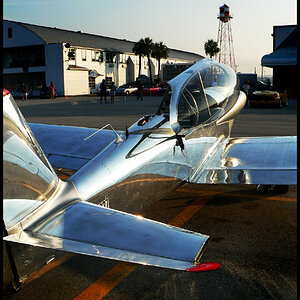Hi all,
I am new here. Just found this place via a Google search. I have had a digital camera for years. A smaller body pocket camera. OK for snapshots but I got so tired of taking important photos (like in China or other one time visits) that once I got home were less than exciting.
I think the problem is partially expecting a pocket camera to deliver higher quality shots. The other problem is ME. I need to become better educated in how to take photos.
Yesterday I did a bit of research on the net and went to my local store and made an impulse decision. I purchased a Nikon D70s with a AF-S Nikkor 18-70mm 1:3.5-4.5 GED lens.
I am pretty comfortable that I got a good camera. But I am wondering if I got the right lens with it. I have also ordered a NIKON 70-300/4-5.6D ED ZOOM AF NIKKOR Lens.
I am hoping to use this equipment to:
1) Photograph my "toys". Mostly guitars. It was a pain to try and get the entire guitar in a photo with the old camera. Not enough width.
2) Shoot some wildlife. I live in a rural area and have a lot of animals and stuff around
3) Travel pics. I travel the world and want better shots to share. I live in Thailand half the year and USA the other half. This June I will be in Dubai and want to take some shots of the amazing things they are doing there.
If anyone has advice on books that will get me up to speed with photography skills I am all ears. In the meantime I will try to search before asking too many newbie questions.
In this long winded post I guess I am asking 3 things.
1) Did I select equipment suitable for my goals?
2) What do all the numbers on the lens MEAN :blushing:
3) Are there any short tutorials on using an dSLR camera?
Thanks.
I am new here. Just found this place via a Google search. I have had a digital camera for years. A smaller body pocket camera. OK for snapshots but I got so tired of taking important photos (like in China or other one time visits) that once I got home were less than exciting.
I think the problem is partially expecting a pocket camera to deliver higher quality shots. The other problem is ME. I need to become better educated in how to take photos.
Yesterday I did a bit of research on the net and went to my local store and made an impulse decision. I purchased a Nikon D70s with a AF-S Nikkor 18-70mm 1:3.5-4.5 GED lens.
I am pretty comfortable that I got a good camera. But I am wondering if I got the right lens with it. I have also ordered a NIKON 70-300/4-5.6D ED ZOOM AF NIKKOR Lens.
I am hoping to use this equipment to:
1) Photograph my "toys". Mostly guitars. It was a pain to try and get the entire guitar in a photo with the old camera. Not enough width.
2) Shoot some wildlife. I live in a rural area and have a lot of animals and stuff around
3) Travel pics. I travel the world and want better shots to share. I live in Thailand half the year and USA the other half. This June I will be in Dubai and want to take some shots of the amazing things they are doing there.
If anyone has advice on books that will get me up to speed with photography skills I am all ears. In the meantime I will try to search before asking too many newbie questions.
In this long winded post I guess I am asking 3 things.
1) Did I select equipment suitable for my goals?
2) What do all the numbers on the lens MEAN :blushing:
3) Are there any short tutorials on using an dSLR camera?
Thanks.



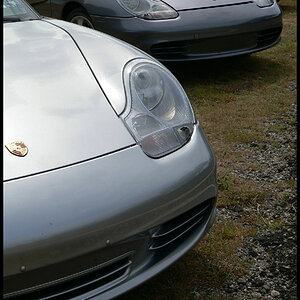
![[No title]](/data/xfmg/thumbnail/31/31747-2e2e2bda16938a6a1d5fd6120c558293.jpg?1619734987)

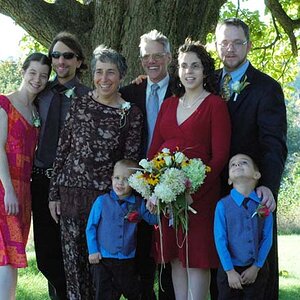
![[No title]](/data/xfmg/thumbnail/34/34140-74799834a513b0cbf28dfda9aeae291b.jpg?1619736312)
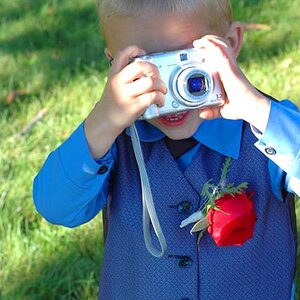
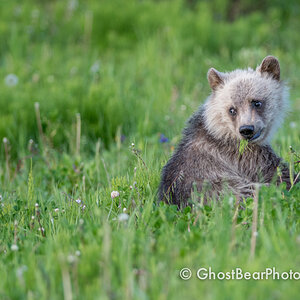
![[No title]](/data/xfmg/thumbnail/31/31750-f3936d67895e1ef2756eb06d7b15fe9c.jpg?1619734990)
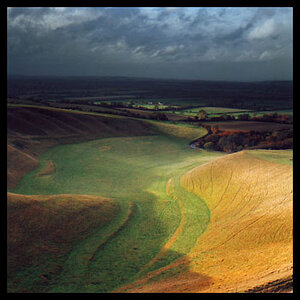
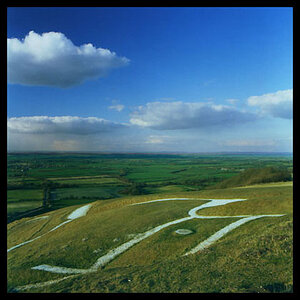
![[No title]](/data/xfmg/thumbnail/31/31749-6cf0f99d6bdedf47f7387c5b943fb717.jpg?1619734989)
